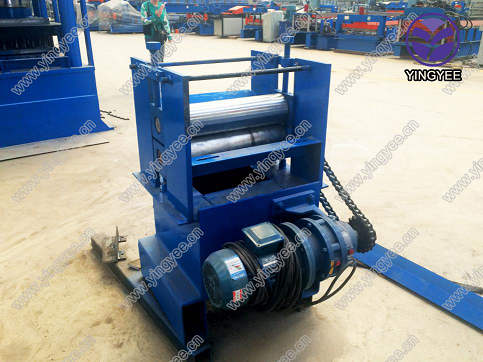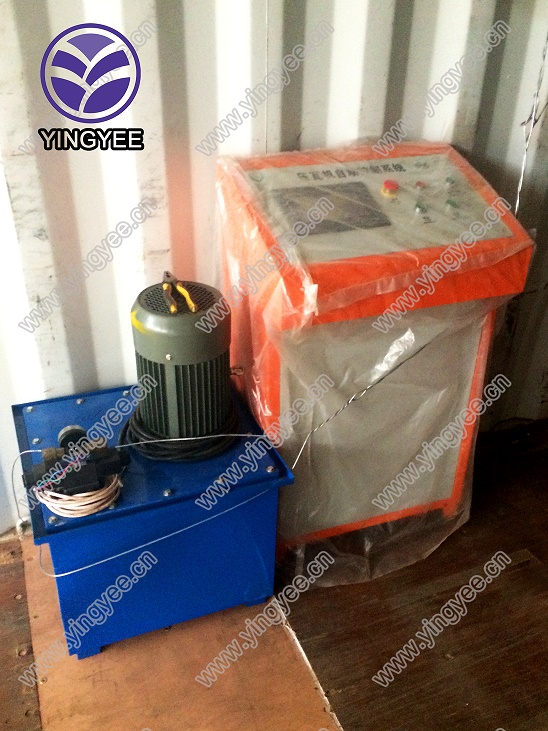
Outline:

(slitting equipment)
Industrial material processing has undergone revolutionary changes since the first mechanical slitters appeared in the 1930s. Today's precision slitting equipment
enables manufacturers to process over 12 million metric tons of metal and film annually worldwide. These systems form the backbone of production lines across packaging, automotive, and electronics sectors, where dimensional accuracy within ±0.001 inches directly impacts product performance. Current market data indicates the slitting machinery segment will grow at 5.8% CAGR through 2028, fueled by demand for thinner, stronger materials in battery production and flexible electronics.
Modern coil slitting equipment integrates multiple proprietary technologies that maximize throughput while minimizing waste. Laser-guided tension control systems maintain consistent web alignment at speeds exceeding 2,500 feet per minute, while real-time thickness monitoring using nuclear gauges achieves measurement precision previously unattainable. The latest servo-driven units reduce changeover time by 87% compared to traditional mechanical designs through quick-release tooling and programmable positioning. Dual-side debris extraction during cutting operations extends blade life by 300% while improving edge quality - critical for aerospace titanium applications where burr-free finishing is non-negotiable.
| Manufacturer | Max Width (mm) | Speed (m/min) | Tolerance (mm) | Changeover (min) | Material Thickness |
|---|---|---|---|---|---|
| Parkinson Technologies | 2,500 | 800 | ±0.005 | 15 | 0.006-3.0mm |
| Kampf Schneidtechnik | 3,200 | 1,000 | ±0.003 | 8 | 0.002-6.0mm |
| Euromac | 2,000 | 600 | ±0.010 | 25 | 0.02-4.5mm |
| Atlas Technologies | 1,800 | 750 | ±0.007 | 12 | 0.008-2.8mm |
Industry leaders now integrate computational modeling during the design phase to create application-specific slitting and rewinding equipment. For carbon fiber manufacturers requiring non-contact processing, engineers developed air-flotation web handling systems that eliminate surface marring. Medical material producers benefit from FDA-compliant configurations featuring polished stainless steel frames and particulate containment chambers. The renewable energy sector drives demand for hybrid machines handling ultra-thin copper foils (18µm) alongside PV backsheets. Such tailored solutions account for 43% of new installations as manufacturers seek specialized capabilities unavailable in standard models.
A European automotive supplier increased yield by 17% after installing precision slitting equipment with AI-based predictive maintenance. The system's vibration analysis sensors detected bearing anomalies four weeks before failure, avoiding €220,000 in scrap materials during a production run. Similarly, a US electronics manufacturer reduced waste by 28% when upgrading to dual-servo coil slitting equipment that dynamically adjusted cutting torque based on copper alloy hardness variations. In flexible packaging, a multinational corporation achieved 99.1% width consistency across 32 lanes after implementing laser-guided alignment, critical for high-speed pouch conversions where variances cause catastrophic wrapping machine jams.
Research departments are testing pulsed fiber laser applications that promise contactless slitting of carbon composite materials. Pilot programs demonstrate 60% energy reduction compared to rotary shear methods while completely eliminating tooling expenses. Industry consortiums including the Association for Coating Technology now fund development of self-sharpening blade coatings using nanoparticle deposition techniques. Artificial intelligence integration represents the next frontier, with several manufacturers developing cognitive systems that autonomously adjust processing parameters during material transitions. The most advanced prototypes utilize spectral analysis to identify alloy compositions mid-process without disrupting production.
Contemporary slitting equipment delivers quantifiable operational improvements that justify capital investment within 12-18 months. Facilities with automated slitting and rewinding equipment report average scrap reduction of 22%, primarily through reduced edge defects and improved width consistency. Production line speed increases of 30-40% are common when upgrading from decade-old machines to modern linear servo configurations. Forward-thinking operators leverage predictive diagnostics to achieve 98% uptime levels, transforming maintenance from scheduled interruptions to condition-based interventions. As material specifications become increasingly demanding across multiple industries, advanced slitting equipment provides the critical precision capability that determines competitive manufacturing viability.

(slitting equipment)
"标签包裹并以"A: "开头。每个问题和回答均控制在三句话内,确保内容简洁相关。
A: Slitting equipment is machinery used to cut large rolls of materials like metal or plastic into narrower strips. It optimizes production for industries such as packaging and manufacturing. This process enhances efficiency and reduces material waste.
A: Slitting and rewinding equipment combines cutting and coiling functions in one system. It slits materials into strips and rewinds them onto separate spools. This integrated design saves time and improves workflow in processing plants.
A: Coil slitting equipment is vital for cutting metal coils into precision strips for automotive and construction industries. It handles materials like steel or aluminum efficiently. This enables production of components such as pipes or hardware parts with minimal errors.
A: Slitting and rewinding equipment offers a two-in-one solution, reducing equipment footprint and costs. It ensures seamless material handling by combining cutting and winding. This is ideal for high-volume operations seeking faster turnaround times.
A: Key factors include material thickness, coil width, and production speed requirements. Also, consider machine durability and automation for consistent output. Proper selection minimizes downtime and boosts profitability in metal processing lines.